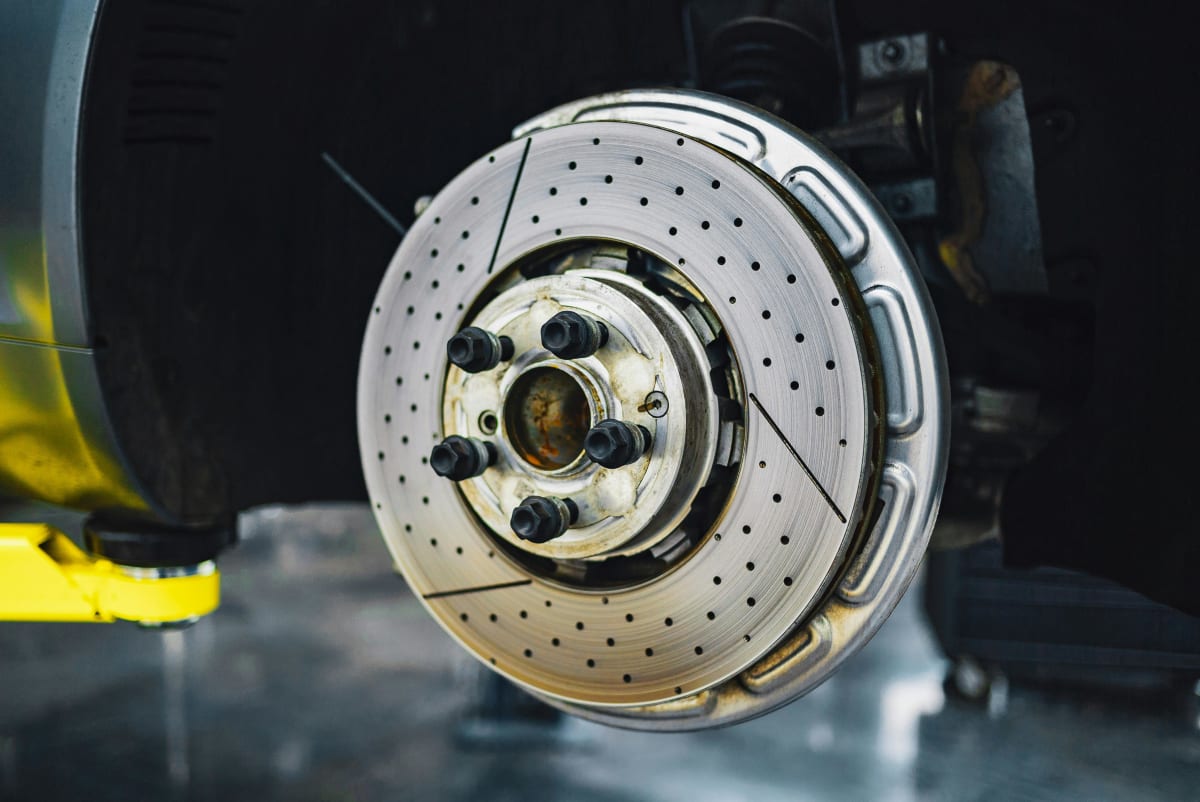Understanding brake rotor replacement costs is important for any vehicle owner looking to maintain their car's performance and safety. Brake rotors, an essential component of a vehicle's braking system, play a critical role in ensuring smooth and safe stops. However, the price of brake rotors can vary significantly based on factors such as material, brand, and vehicle type. In this discussion, we will explore the various elements that influence brake rotor costs, offering insights into what you should consider when purchasing new rotors. By the end, you'll have a clearer understanding of how to make informed decisions that balance quality and cost.
Importance of Brake Rotors
Role in Vehicle Safety
Brake rotors are fundamental to vehicle safety. They work in tandem with brake pads to create the friction required to slow down or stop the vehicle. When you press the brake pedal, the brake pads clamp onto the rotors, causing the wheels to slow down. This process is critical in preventing accidents and ensuring safe driving conditions. Worn or damaged rotors can compromise the brakes' braking efficiency, leading to longer stopping distances. In emergency situations, this can mean the difference between a near miss and a collision. Regular inspection and replacement of brake rotors are vital to maintain their effectiveness. Neglecting this maintenance can result in rotor warping or cracking, which further jeopardises safety. Therefore, understanding the condition and quality of your brake rotors is crucial in safeguarding not only your passengers but also other road users.
Impact on Driving Experience
Brake rotors have a considerable effect on the overall driving experience. High-quality rotors contribute to a smoother ride, offering consistent and reliable braking performance. When rotors are in good condition, drivers can expect responsive braking, which is essential for confidence behind the wheel. Conversely, worn or inferior rotors can lead to issues such as vibrations, squealing sounds, or a spongy brake pedal, all of which can detract from the driving experience. These symptoms not only cause discomfort but can also be distracting, potentially leading to unsafe driving conditions. Furthermore, the choice of rotor material and design can influence the vehicle's handling and braking efficiency, especially in different weather conditions. Thus, selecting the right rotors, tailored to your driving style and vehicle specifications, can enhance comfort and safety, ensuring a more pleasant and secure journey.
Factors Influencing Costs
Quality and Material
The quality and material of brake rotors significantly influence their cost. Generally, rotors made from higher-grade materials tend to be more expensive but offer better performance and longevity. Common materials include cast iron, which is cost-effective and widely used, and carbon composites, which are lightweight and offer superior performance but at a higher price point. Carbon composite rotors are typically found in high-performance or luxury vehicles. Additionally, the manufacturing process, such as whether the rotors are drilled or slotted, can also affect the price. Drilled and slotted rotors often provide better heat dissipation and improved braking performance, especially under extreme conditions. However, the added benefits come at an increased cost. When considering new rotors, it’s essential to weigh the benefits of higher quality materials against your budget and driving needs, ensuring that you invest in rotors that provide both safety and value.
Brand and Manufacturer
The brand and manufacturer of brake rotors can have a considerable impact on their cost. Established brands often charge a premium for their products due to their reputation for quality, reliability, and performance. These companies invest heavily in research and development to produce rotors that meet stringent safety and performance standards. As a result, their products are typically more durable and efficient, justifying the higher price tag. On the other hand, lesser-known brands may offer more budget-friendly options, but these might not provide the same level of assurance in terms of longevity and braking performance. When selecting rotors, it’s important to consider the reputation of the manufacturer and any reviews or recommendations from other vehicle owners. While choosing a well-known brand may cost more initially, it could lead to savings in the long run through improved safety and reduced maintenance costs.

Types of Brake Rotors
Standard vs. Performance
Brake rotors come in two primary categories: standard and performance. Standard rotors are typically designed for everyday driving conditions, providing reliable braking at a more affordable price. They are sufficient for most drivers who navigate urban areas or highways without heavy braking demands. Performance rotors, on the other hand, are engineered for enhanced braking efficiency and heat dissipation, making them ideal for high-performance or sports vehicles. These rotors often feature unique designs, such as drilled discs or slotted surfaces, which help prevent overheating and improve brake response during intense driving conditions. However, the advanced materials and construction of performance rotors usually mean a higher cost compared to standard versions. When deciding between standard and performance rotors, it is essential to consider your driving habits and the demands placed on your vehicle. Opting for performance rotors can enhance safety and driving enjoyment, but may not be necessary for all users.
Drilled, Slotted, and Vented
Brake rotors can be classified into different types based on their design: drilled, slotted, and vented. Drilled rotors feature a series of holes drilled into them, which help dissipate heat and gases produced during braking, reducing the risk of brake fade. This makes them ideal for wet conditions where maintaining brake performance is crucial. Slotted rotors, on the other hand, have channels or grooves cut into the surface. These slots help improve bite and remove debris, water, or gas from the rear rotor surface, enhancing braking efficiency, particularly during high-performance driving. Vented rotors have a hollow central section with vanes that facilitate air circulation, offering better cooling than solid rotors. This design is particularly beneficial for preventing overheating during extended braking. Each type has its advantages and is suited for different driving needs. When selecting rotors, consider the driving conditions you frequently encounter to choose the most appropriate design.
Maintenance and Longevity
Signs of Wear and Tear
Recognising the signs of wear and tear on brake rotors is crucial for maintaining vehicle safety and performance. Common indicators include vibrations or pulsations in the brake pedal, which suggest warped rotors. Squealing or grinding noises during braking can indicate that the rotors are worn down or the brake pads are damaged. Visually, rotors may show signs of scoring or grooves, which can affect braking efficiency. Additionally, a noticeable reduction in braking performance, such as requiring longer stopping distances, often points to rotor issues. Regular inspections can help identify these signs early, preventing further damage and costly repairs. It's advisable to check rotors for uniform thickness and any visible cracks or rust, especially if you drive in harsh conditions. Addressing these issues promptly by replacing or resurfacing the rotors can enhance safety and extend the lifespan of your braking system.
Tips for Prolonging Rotor Life
Prolonging the life of your brake rotors can save time and money on repairs and maintain optimal vehicle performance. One effective method is practising smooth and gradual braking, which reduces stress and heat build-up on the rotors. Avoiding aggressive driving habits, such as hard stops, can significantly minimise rotor wear. Regular maintenance, including brake fluid checks and pad replacements, is crucial. Worn-out brake discs and pads can damage rotors, so replacing them in a timely manner prevents unnecessary rotor wear. Keeping your vehicle's wheels and braking components clean can also prevent debris from causing damage. When washing your car, pay attention to these areas to remove any dirt or residue. Additionally, ensure that your tyres are properly inflated, as this helps distribute braking forces evenly, reducing rotor strain. By following these tips, you can extend the lifespan of your rotors and ensure a safer driving experience.
Choosing the Right Rotors
Budget Considerations
When selecting brake rotors, budget considerations play a crucial role in decision-making. It's important to balance cost with quality and performance. While high-end rotors often offer superior performance and longevity, they may not be necessary for all vehicles or driving conditions. Conversely, opting for the cheapest option might lead to frequent replacements or compromised safety. Consider your driving habits and the typical conditions in which you drive. If you use your vehicle for regular commuting, standard rotors may suffice. However, if you frequently drive in harsh conditions or have a performance vehicle, investing in higher-quality rotors could be beneficial. Factor in replacement cost and the potential long-term savings from reduced maintenance and better safety. It's also worth exploring mid-range options that provide a good balance of performance and price. Researching and comparing different brands and models can help you find rotors that align with both your budget and safety needs.
Expert Recommendations
Consulting expert recommendations can greatly assist in choosing the right brake rotors for your vehicle. Automotive professionals often suggest considering the specific needs of your vehicle, such as its make, model, and typical usage. For everyday vehicles, experts might recommend standard rotors that offer reliable performance at a reasonable price. However, for sports or high-performance vehicles, they often advise opting for performance rotors with enhanced features like drilled or slotted designs for better heat management. Additionally, experts emphasise the importance of purchasing rotors from reputable brands known for their quality and durability. Seeking advice from a trusted mechanic or automotive specialist can provide valuable insights into which front rear brake rotors are best suited for your driving conditions. They can also offer guidance on the latest advancements in rotor technology and help you decide if investing in premium options is worthwhile based on your driving habits and safety requirements.









